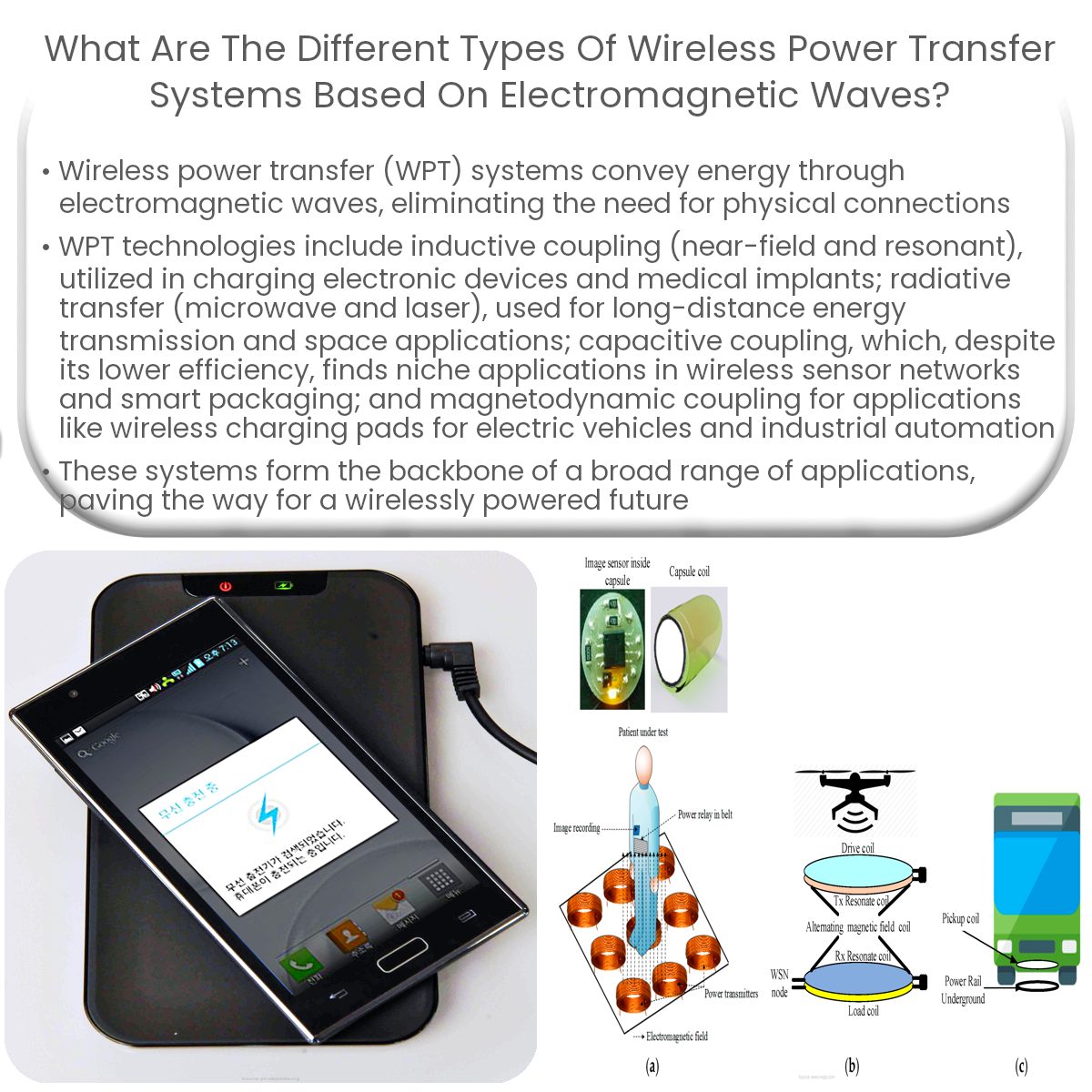Different types of wireless power transfer systems include near-field inductive coupling, resonant inductive coupling, microwave and laser power transmission, capacitive coupling, and magnetodynamic coupling.
Introduction to Wireless Power Transfer Systems
Wireless power transfer (WPT) systems use electromagnetic waves to transfer energy without the need for physical connections. This technology offers a convenient and efficient way to power electronic devices. In this article, we will explore the different types of WPT systems based on electromagnetic waves.
1. Inductive Coupling
- Near-Field Inductive Coupling: Near-field inductive coupling relies on magnetic fields generated by alternating currents in coils. Devices must be in close proximity for efficient power transfer. This method is commonly used for charging electric toothbrushes and smartphones.
- Resonant Inductive Coupling: This technique uses resonant coils to improve power transfer efficiency at greater distances. Devices like wireless chargers for electric vehicles and medical implants utilize resonant inductive coupling.
2. Radiative Transfer
- Microwave Power Transmission (MPT): MPT uses microwaves to transmit energy over longer distances. It operates in the frequency range of 300 MHz to 300 GHz. Potential applications include space-based solar power systems and wireless power beaming.
- Laser Power Transmission (LPT): LPT uses laser beams to transfer power. It offers higher efficiency than MPT due to its directivity and minimal energy dispersion. LPT can be used for powering drones, satellites, and space exploration missions.
3. Capacitive Coupling
Capacitive coupling uses electric fields generated by alternating voltage to transfer energy between two conductive plates. This method is less common due to lower efficiency and shorter transfer distances. However, it is used in certain niche applications like smart packaging and wireless sensor networks.
4. Magnetodynamic Coupling
Magnetodynamic coupling, also known as electrodynamic induction, employs the interaction of time-varying magnetic fields with conductive materials to generate eddy currents. These currents, in turn, produce their own magnetic fields, enabling energy transfer. Applications include wireless charging pads for electric vehicles and industrial automation.
Conclusion
Wireless power transfer systems based on electromagnetic waves offer a wide range of applications, from consumer electronics to space exploration. Key WPT technologies include inductive coupling, radiative transfer, capacitive coupling, and magnetodynamic coupling. By understanding the underlying principles and characteristics of these systems, engineers and researchers can continue to develop innovative solutions for a wirelessly powered future.



